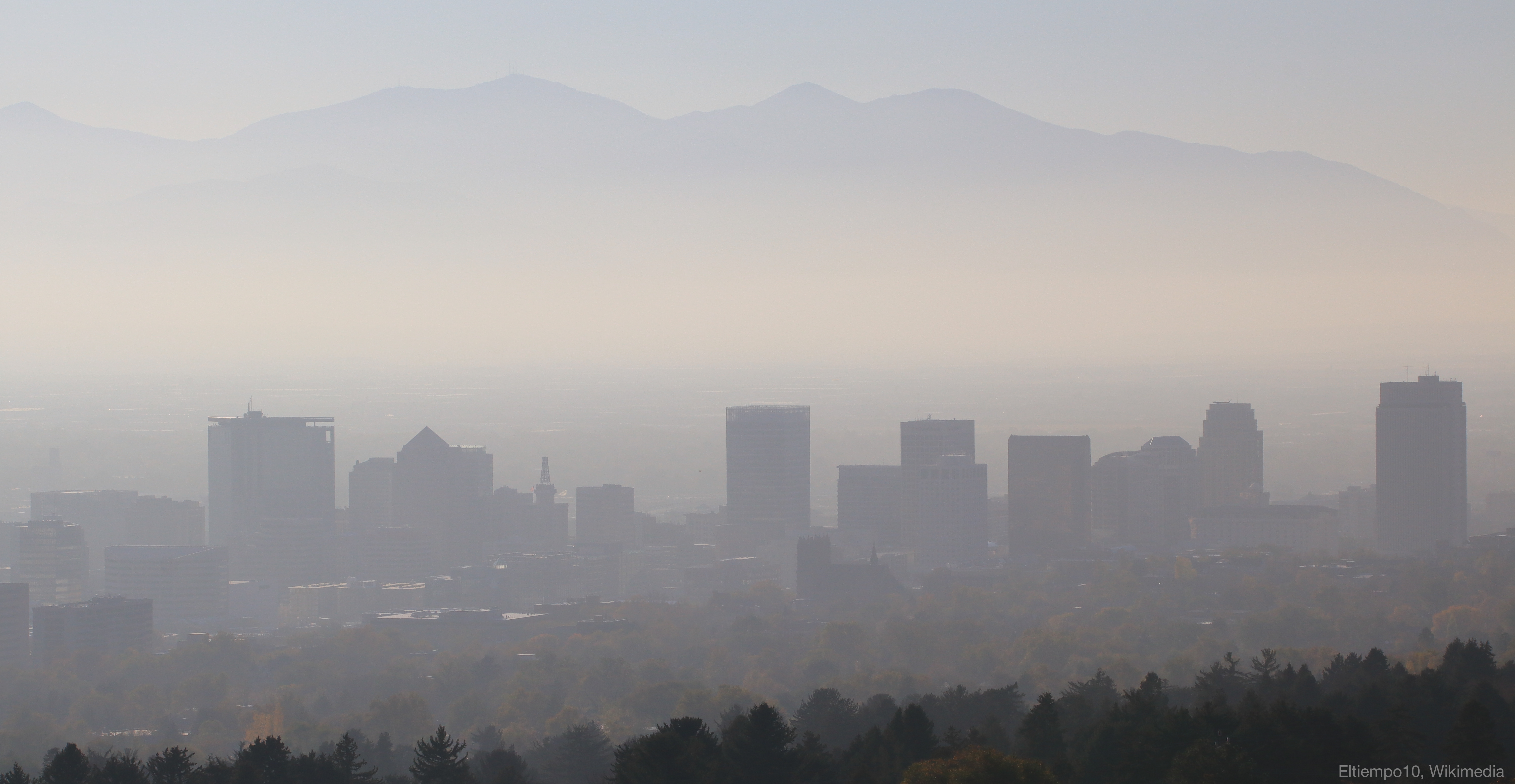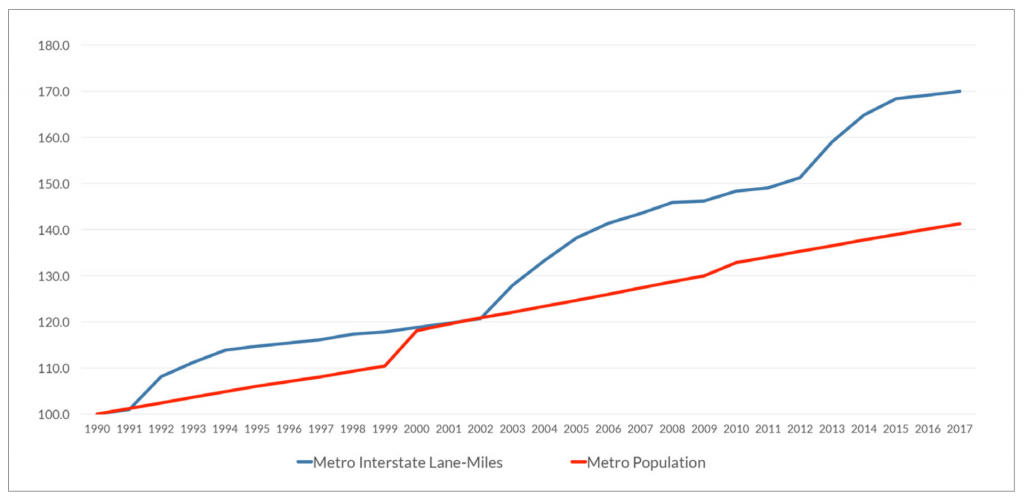

The intersection between climate change and transportation will be on full display during a committee hearing in the U.S. House of Representatives. But will members of Congress take the opportunity to examine the critical role that federal transportation policy has played in creating the climate crisis? Here are six things we’ll be looking for during the hearing.
On Tuesday, February 26, at 10 a.m., the House Transportation and Infrastructure (T&I) Committee will hold a hearing entitled, “Examining How Federal Infrastructure Policy Could Help Mitigate and Adapt to Climate Change.” This hearing will give members of Congress a unique opportunity to discuss the merits and flaws in our transportation system.
When this topic has come up in the past, Congress has often focused exclusively on the role of auto manufacturers in improving fuel economy and the oil industry in reducing the carbon content of gasoline. But will the T&I Committee take advantage of this opportunity to ask probing questions about its own role in reducing GHG emissions by the way it funds the transportation system?
To help the committee inform its discussion, we recently produced two fact sheets outlining the links between transportation and climate change and some solutions.
Here are six things we would like to hear from today’s hearing:
1. A real conversation about the links between transportation and climate change
Transportation is now the single largest source of greenhouse gases (GHG), contributing 28 percent of the United States’ total GHG emissions, surpassing electrical generation. While many other sectors have improved, transportation is headed in the wrong direction. Driving represents 83 percent of all transportation emissions and these emissions are rising—despite more efficient vehicles and cleaner fuels—because people are driving more and making longer trips.
2. Focus on policy, not technology
EV’s will not solve the climate crisis alone: The State of Minnesota recently found that, “the average Minnesotan would have to drive an estimated 1,500 fewer miles per year” to achieve its climate goals. The State of California found that, even after a ten-fold increase in the number of zero emission vehicles, it would have to reduce vehicle miles traveled (VMT) per capita by 25 percent to achieve its climate goals. Hawaii came to a similar conclusion. Electric vehicles alone will not be sufficient to reduce transportation sector emissions, even if we replaced every gas car on the road with an electric one tomorrow.
3. A discussion about whether federal policy should continue to disproportionately subsidize driving over all other modes

80 percent of federal transportation formula funding is for roads. Though they are permitted to, states rarely use these funds for other purposes and there is no requirement to prioritize maintenance first. Funding for new roads is guaranteed through the highway trust fund. Funding for new transit is discretionary and has been repeatedly targeted for cuts or outright elimination. The federal government will only cover up to about 50 percent of the cost of new transit projects, while covering around 80 percent of the cost of new roads.
With new roads subsidized by the federal government, localities struggle to stay ahead of development that spreads further from the center of metro areas, forcing people to travel further to access jobs and services. Often, state and local authorities use funding intended to make walking or bicycling safer to build roadways instead. The resulting growth in driving and congestion leads to a demand for more roads, which induces even more driving. The U.S. has added lane miles faster than our population has grown. This strategy has failed to “solve” traffic congestion and has significantly increased greenhouse gas emissions, offsetting the modest gains made in vehicle efficiency and cleaner fuel.
4. An acknowledgment of the perverse incentives in the current system
States are rewarded with more federal funds if they burn more fuel, increase vehicle miles traveled, and build new lane-miles. That’s one example. There are scores of others.
5. Call out the role of speed in degrading safety, increasing pollution and congestion
Because free flowing traffic is considered the gold standard, roads are built to ensure traffic flows quickly. This means that a long-distance commute where a car moves very quickly (even over a very long total trip time) would be considered more successful than a far shorter commute at a slower speed in traffic. Designing roads with speed as the highest goal is what leads us to more and wider roads, and more and longer trips. Instead, roads should be considered as part of a network which is judged on whether people can reach jobs and services by any mode of travel, not the simplistic measure of whether some of them travel at high speed when driving.
6. A discussion about measuring progress (or failure), and holding states accountable
In 2012, Congress gave states more discretion over spending in exchange for a weak, opaque system of accountability in which states are required to set targets for transportation safety, state of repair and traffic movement. These targets can be negative (e.g., a safety target of increasing roadway deaths) with no rewards for hitting targets nor penalties for missing them. After seven years most of those targets are still not public. There are also no requirements for states or communities to measure and report the GHG emissions and VMT per capita effects of their transportation investments.
Congress got snowed by the states.
Looking for solutions?
A conversation along these lines above would be new and an important step forward, but we also need to start talking about some thoughtful solutions. With driving responsible for 83 percent of all transportation emissions—which are growing despite more efficient vehicles and cleaner fuels because people are driving more and making longer trips—it is critical for Congress to make major changes to the federal transportation policy that’s making it all possible.
What will the committee members propose? We have some ideas:
- All modes should receive the same federal share: Currently, the federal government will fund up to 80 percent of a road project (even 90 percent in limited cases), while it will only fund up to 50 percent of a transit project.
- Reform federal funding distribution: Currently, each state receives dedicated road funding through the highway trust fund formulas, which increases as states increase their VMT. New public transit, bike, and pedestrian infrastructure funds are either discretionary (transit Capital Investment Grant program), or an underused option within roadway funding (eg. Transportation Alternatives Program and Surface Transportation Block Grant). Congress could organize the formula funding around efficiency goals and create more parity between the modes.
- Prioritize maintenance with formula road funding: Historically, states have used this formula funding for new road construction, encouraging far-flung auto-oriented development that increases the length and number of car trips. The program should focus on getting greater efficiency from the roads we have already built.
- Measure the right things: Communities need accurate tools to make informed choices. So what should we measure and replace?
- Measure GHG, and VMT per capita: States and communities should measure and report the GHG emissions and VMT per capita effects of their transportation investments.
- Measure how well the transportation system connects people to destinations: Roadways are designed to move cars quickly with the assumption that there will always be more traffic, a self-fulfilling prophecy that leads to more and wider roads. Instead of measuring speed and traffic flow on roads, we should measure how the system, and any new investment, connects people to jobs and services by all modes of travel.
- Set climate goals and penalties for failure to achieve goals: Just measuring our impact won’t quite cut it. The federal government should set GHG and VMT per capita reduction goals and require all states to implement policies to achieve these goals. States failing to achieve their goals should be penalized. States that exceed goals should be rewarded.
- Align new construction with GHG goals: In the transit program, new capacity projects have to compete for funding and successful projects must demonstrate that they advance national and local goals, including environmental benefits and economic development. There is no such standard for new highway projects. Congress should require funding for new highway capacity to compete for funding, and preference should be given for projects that reduce GHG emissions and VMT per capita.




